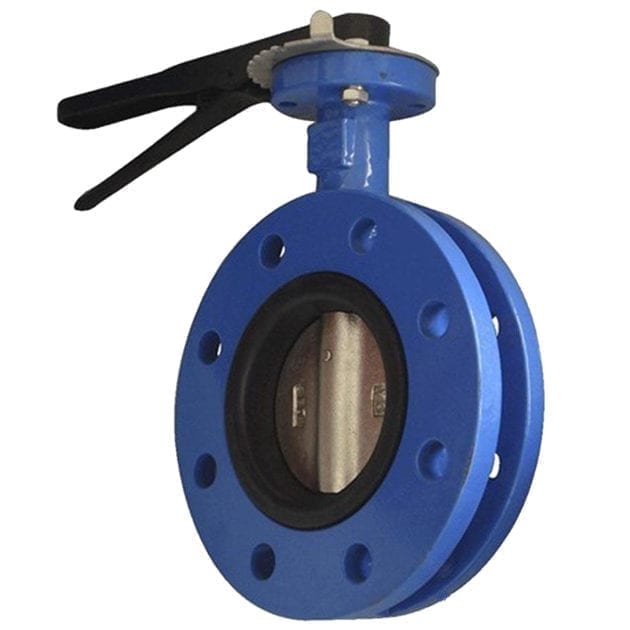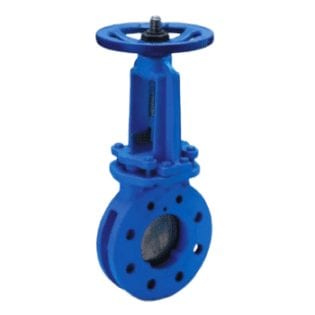




Butterfly Valve
| Size Range: |
1/2″ ~ 12″ |
| Pressure: |
ANSI CL150 to CL800 & Up to 3000 PSI |
| End: |
NPT Threaded, Socket Weld, Flanged |
| Material: |
Cast Iron, Cast Steel, Forged Steel, Stainless Steel, Brass/Bronze |
| Origin: |
Italy, Germany, Korea, India, China, Taiwan |
-
Original Products
-
Warranty Against Defects
-
Returns & Refunds Policy
-
Ships Worldwide
-
Dedicate Support
- Description
- FAQ
- Primary Functions of Butterfly Valves
- Types of Butterfly Valves
- Key Features and Benefits
- Applications or Uses
A butterfly valve is a valve which can be used for isolating or regulating flow. The closing mechanism takes the form of a disk. Operation is similar to that of a ball valve, which allows for quick shut off. Butterfly valves are generally favored because they are lower in cost to other valve designs as well as being lighter in weight, meaning less support is required. The disc is positioned in the center of the pipe, passing through the disc is a rod connected to an actuator on the outside of the valve. Rotating the actuator turns the disc either parallel or perpendicular to the flow. Unlike a ball valve, the disc is always present within the flow, therefore a pressure drop is always induced in the flow, regardless of valve position.
Across many sectors, including chemicals and oil, butterfly valves serve the essential function of controlling and regulating the flow of gases and liquids. The term butterfly stems from the disc-like valve's ability to rotate on an axis, thus enabling it to have a dual function as an isolating valve as well as a regulating one. Because these valves are rather small, light and inexpensive, they are well suited for many industrial and commercial applications.
Butterfly valves are critical components in fluid systems where control of flow is paramount. They can operate quickly, and because of their technology and configuration, they can cut installation costs and maintenance thereby improving the performance of the system.
- What are the main uses of butterfly valves in industrial applications?
In the pharmaceutical, oil and gas, water, HVAC, and chemical processing, food processing industries, butterfly valves are used to isolate, regulate, and control the flow of gas liquids.
- How do butterfly valves compare to other types of valves, like ball or gate valves?
Ball or gate valves are still the most effective valves for facilitating shutoff applications. However, butterfly valves are lightweight, inexpensive, and compact as compared to the first two mentioned valve types.
- What materials are commonly used in butterfly valves, and how do they impact performance?
With a combination of material & elastomers, butter valves are available in cast iron, stainless steel, aluminum, brass, bronze, PVC with BUNA & PTFE elastomers, making them suitable for different applications & high-performance to operate under stress and resist corrosion and oxidation.
- How do I choose the right butterfly valve for my specific application?
Some of the determining factors can be temperature, pressure, flow control requirements, and type of fluid. An engineer can help you decide on this question.
- What are the key benefits of using automated butterfly valves?
With the current construction of automated butterfly valves, you can reduce the number of times internal systems mess up, use other systems rather than relying on human aid, and sustain accuracy.
The broad functions of butter valves in industrial telemetry systems are as follows:
- Flow Control: Butterfly valves, commonly called wafer valves or Lug valves in UAE, are able to control the speed of fluid or gas movement and, therefore, the rate of flow of moving fluid or gas is under the control of an operator.
- Isolation: Achieve a total shutoff capability, enabling parts of a pipeline to remain isolated for servicing and safety.
- Regulation: These butterfly valves are able to adjust the flow rate of fluids or gases, which is a requirement in systems that are almost always in constant flow or have minimal disturbances.
- Wafer Butterfly Valve
This is the most compact and economic design, this valve is sandwiched between two flanges in a pipeline. Recommended for low pressure pipelines. - Lug Butterfly Valve
Just similar to wafer valves, lug butter valves are, but with threaded lugs that allow the valve to be bolted into place. It is perfect for situations where the valve needs to be removed without having disrupt the pipelines., - Flanged type Butterfly Valve
The flanged butterfly valve has flanges at both ends, making installation much easier and more secure. Highly recommended for high pressure applications. - Triple Offset Type Butterfly Valve
The tripe offset valve has a more complex design with three offsets that provide a tight seal, making it the perfect solution for high-pressure, high-temperature applications.
1) Lightweight and Compact Design
Butterfly Valves are space-saving in design and thus big in utility. They have a better utility as compared to gate or ball valves since they are easier to install and work with when there are space limitations during their installation. They also allow for substantial savings in structural and transportation costs because of their streamlined construction of the valve making the pipe weight lighter overall.
2) Quick Operation and Ease of Use
A quarter-turn mechanism is employed to open and close the butterfly valve; this helps save time and allows the valve to be operated in a fast and effective manner, which is crucial in places where rapid flow of something or a stop is required immediately. Due to their basic design, they are easy to use, allowing for comfort while operating, even for people in places where the system is more complicated.
3) Cost-Effectiveness
Due to the economics of design allowing for a more simplified and easy to understand waste in material, so using butterfly valves in place of other types of valves saves money. Furthermore, since their design is overall more simplistic, the chance of the mechanical part failing is low, keeping the cost of repairs cheap.
4) Durability and Low Maintenance
Butterfly valves are able to sustain incredibly harsh situations such as high pressure, temperatures, and even corrosion. Because of the harsh conditions, the number of moving parts reduces the wear and tear of the equipment ensuring that it is long lasting. Because of this, butterfly valves have emerged as a low-maintenance solution to complex applications.
5) Corrosion Resistance
Industries with aggressive chemicals or those that are in saline environments are prone to damage, however, employing the use of butterfly valves that use stainless steel and elastomers render such requirements. Due to such features, the valves have ensured that performance and integrity are sustained over time, even under difficult conditions.
6) High-Pressure Handling
When it comes to maintaining high-pressure systems, advanced butterfly valves seem to do the job excellently. Being able to maintain pressure makes them useful across various industries. Such features are a necessity in the Oil and Gas industries.
These features haven’t compromised the efficiency of the butterfly valves and have ensured great performance and cost-effectiveness like other strong valves.
Butterfly valves are renowned for their versatility, which makes them suitable for a wide range of applications across industries. Their efficient flow control, compact design, and adaptability ensure optimal performance in various operational environments. Based on the frequency of operation, industries use manual or motorized valves, which is popularly called as actuator butterfly valves.
1) Water and Wastewater Treatment
Butterfly valves are an essential component of water treatment plants and wastewater facilities for flow control and regulation. They are important in filtration, distribution, and even sewage systems since there is little energy loss during their operations. Manual butterfly valves are ideal for the municipal and industrial water management systems since they can handle great water volumes with ease.
2) Oil and Gas Industry
Butterfly valves also play a key role in the control of oil and gas gas flow for conversion and distribution. These valves come with a durable design which means that they are able to work in harsh pressure conditions. As a result, it is applicable both onshore and offshore. In addition, there are many applications, including refineries, piping, and even storage, that use this type of valve for increased comfort. Based upon pipe size, frequency, pressure, industries equip lines with manual or actuated butterfly valves.
3) Chemical Processing
In the chemical industry, it is common to find remotely operated butterfly valves or butterfly actuators that help in the regulation of highly corrosive or even dangerous materials. Such valves are made of material that is resistant to corrosion making them appropriate for such substances and preventing danger and loss in critical activities. Most chemical industries use stainless steel SS316, Ss316L butterfly valves and PVC butterfly valves.
4) HVAC Systems
Butterfly valves are used in cases where flow control is needed in ductwork and air-handling units as part of heating, ventilation, and air conditioning systems. One of their advantages is their small size and ability to operate quickly which increases the energy efficiency of such systems, so it is popular to use highly accurate actuated butter valves in commercial and industrial HVAC systems.
5) Food and Beverage Industry
For syrup, oil, and liquid handling, butterfly valves are prevalent in the food and drink processing industry. Their hygienic design makes for compliance with sanitary regulations therefore being required in clean-in-place (CIP) systems or any other clean practices. Most of the catering and food making companies have SS316L food grade butterfly valves in their food processing pipelines.
6) Power Generation
Giant size Butterfly valves, mostly remote operated butterfly valves, motor actuated are used in power plants for water flow regulation in cooling systems and for steam and gas flow control in turbines. They are strong and dependable in terms of design and characteristics for the rigors of such working conditions.
7) Marine Applications
Butterfly valves are employed by the marine industry for control of seawater and ballast systems in ships; those are the applications that span into a harsh maritime environment where superior corrosion resistance is a prerequisite for reliable longevity of the product.

















